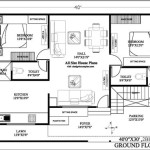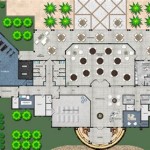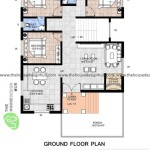Solar House Plants: Revolutionizing Indoor Cultivation
Solar house plants, a relatively new concept, represent a potential paradigm shift in how individuals cultivate plants indoors. These systems integrate photovoltaic (PV) technology with traditional horticulture, enabling plants to thrive in environments with limited natural light. This article will explore the principles behind solar house plants, their benefits, challenges, and future prospects.
The core concept revolves around capturing solar energy via PV panels and converting it into electricity. This electricity then powers LED grow lights specifically designed to provide plants with the necessary spectrum of light for photosynthesis. The integration of these technologies allows for indoor plant growth even in locations lacking sufficient sunlight, such as basements, apartments with limited window exposure, or commercial buildings.
Traditional indoor plant cultivation often relies on artificial lighting, which can be energy-intensive and costly. Solar house plants offer a sustainable alternative by utilizing renewable energy. This approach lessens the reliance on grid electricity and reduces the carbon footprint associated with indoor plant care. Furthermore, the ability to control the light spectrum and intensity through LED technology allows for optimizing plant growth and potentially increasing yields.
Understanding the Components of a Solar House Plant
A solar house plant system typically comprises several key components working in conjunction: solar panels, a charge controller, a battery (optional), an inverter (optional), LED grow lights, and the plant itself, along with its growing medium. Each component plays a vital role in the overall functionality of the system.
Solar Panels: The initial energy capture is performed by solar panels. These panels, composed of photovoltaic cells, convert sunlight directly into direct current (DC) electricity. Panel size and efficiency are critical factors determining the amount of energy generated. Monocrystalline panels are generally preferred for their higher efficiency compared to polycrystalline panels, though they tend to be more expensive. Amorphous silicon panels are another option, often cheaper but less efficient. The choice depends on the available space, budget, and energy requirements of the specific plants being cultivated.
Charge Controller: The charge controller regulates the flow of electricity from the solar panels to the battery (if present) and to the LED grow lights. Its primary function is to prevent overcharging the battery, which can significantly reduce its lifespan and potentially lead to damage. Modern charge controllers often employ maximum power point tracking (MPPT) technology, which optimizes the efficiency of the solar panels by continuously adjusting the voltage and current to maximize power output based on changing sunlight conditions. This ensures the system operates at its peak performance throughout the day.
Battery (Optional): The inclusion of a battery provides energy storage, allowing the system to operate even when sunlight is not available. This is particularly useful for maintaining consistent light levels during cloudy days or at night. Batteries are typically deep-cycle batteries, designed for repeated charging and discharging cycles. Lithium-ion batteries are increasingly popular due to their high energy density, longer lifespan, and lower weight compared to traditional lead-acid batteries. However, they are also more expensive. The battery capacity should be carefully chosen based on the energy consumption of the LED grow lights and the desired autonomy of the system.
Inverter (Optional): An inverter converts DC electricity from the solar panels or battery into alternating current (AC) electricity, which is required by some LED grow lights and other household appliances. If the LED grow lights are DC-powered, an inverter is not necessary, simplifying the system. However, utilizing an inverter allows for greater flexibility in terms of the types of devices that can be powered by the solar energy.
LED Grow Lights: LED grow lights are specifically designed to emit the wavelengths of light that plants need for photosynthesis. Unlike traditional incandescent or fluorescent lights, LEDs are highly energy-efficient and emit very little heat, minimizing the risk of damaging plants. Different plants require different light spectrums, so selecting the appropriate LED grow lights is crucial. Full-spectrum LEDs are often used as they provide a broad range of wavelengths that support plant growth throughout its life cycle.
Plants and Growing Medium: The selection of suitable plants is crucial for a successful solar house plant system. Plants with lower light requirements, such as leafy greens, herbs, and certain succulents, are generally well-suited for indoor cultivation with artificial light. The growing medium, whether soil, hydroponics, or other soilless substrates, should be chosen based on the specific needs of the chosen plants.
Benefits of Utilizing Solar House Plants
Integrating solar energy into indoor plant cultivation presents various advantages over conventional methods, spanning economic, environmental, and practical considerations.
Reduced Energy Consumption and Costs: One of the most significant benefits of solar house plants is the reduction in energy consumption and associated costs. By harnessing solar energy, the reliance on grid electricity for powering grow lights is diminished or eliminated. This leads to lower electricity bills and reduced dependence on fossil fuels. The initial investment in solar panels and other equipment may be significant, but the long-term savings on energy costs can offset this initial expense, making it a cost-effective solution over time.
Environmental Sustainability: Solar house plants contribute to environmental sustainability by reducing the carbon footprint associated with indoor plant cultivation. Traditional methods rely heavily on electricity generated from fossil fuels, contributing to greenhouse gas emissions and climate change. By utilizing renewable solar energy, solar house plants minimize these environmental impacts. Furthermore, growing plants indoors can improve air quality by absorbing carbon dioxide and releasing oxygen, further enhancing the environmental benefits.
Increased Plant Growth Control: Solar house plant systems allow for precise control over the light spectrum and intensity that plants receive. This control enables optimizing plant growth and potentially increasing yields. LED grow lights can be programmed to mimic the natural light cycles of different seasons or geographic locations, providing plants with the ideal conditions for their development. This level of control is difficult to achieve with natural sunlight alone, particularly in indoor environments.
Off-Grid Cultivation Capabilities: Solar house plants can be designed as completely off-grid systems, making them ideal for remote locations or areas with unreliable electricity access. This allows for growing food or other plants in areas where it would otherwise be impossible. Off-grid systems require a battery to store the solar energy for use during periods of darkness or low sunlight. This independence from the grid offers a resilient and sustainable solution for plant cultivation in challenging environments.
Educational Opportunities: Solar house plant systems provide valuable educational opportunities for learning about renewable energy, plant science, and sustainable agriculture. They can be used in schools, universities, and community gardens to teach students about the principles of solar energy, the importance of plant biology, and the potential of sustainable food production. Hands-on experience with these systems can inspire a new generation of scientists, engineers, and environmental advocates.
Challenges and Considerations for Implementation
While solar house plants offer numerous benefits, there are also several challenges and considerations that must be addressed to ensure successful implementation.
Initial Investment Costs: The initial investment cost for solar panels, LED grow lights, batteries (if included), and other components can be substantial. This can be a barrier to entry for some individuals or organizations. However, the long-term cost savings on energy bills and the environmental benefits can justify the initial investment. Exploring financing options, such as government incentives or loans, can help to make solar house plants more affordable.
Space Requirements: Solar panels require a certain amount of space to effectively capture sunlight. This can be a limiting factor for individuals with limited outdoor space, such as apartment dwellers. Careful planning and optimization of panel placement can help to maximize energy capture in limited spaces. Vertical solar panel installations can also be utilized to reduce the footprint of the system.
System Complexity: Designing and installing a solar house plant system can be complex, requiring knowledge of solar energy, electrical wiring, and plant science. Improper installation can lead to system inefficiencies or even safety hazards. Consulting with a qualified solar installer or electrician is recommended to ensure the system is properly designed and installed. Online resources and educational materials can also help to improve understanding of the system components and operation.
Battery Maintenance and Lifespan: If a battery is included in the system, it requires regular maintenance and has a limited lifespan. Batteries must be properly charged and discharged to maximize their lifespan. Extreme temperatures can also affect battery performance and lifespan. Selecting high-quality batteries and following the manufacturer's recommendations for maintenance can help to extend the battery's lifespan. Lithium-ion batteries generally have a longer lifespan than lead-acid batteries, but they are also more expensive.
Light Spectrum Optimization: Different plants require different light spectrums for optimal growth. Selecting the appropriate LED grow lights with the correct spectrum is crucial for successful plant cultivation. Researching the specific light requirements of the chosen plants is essential. Full-spectrum LEDs are often a good choice as they provide a broad range of wavelengths that support plant growth. However, some plants may benefit from more specific light spectrums tailored to their needs.
Solar house plants provide a compelling alternative approach to cultivating plants indoors, promoting sustainability and potentially increasing efficiency. By understanding the principles, benefits, and challenges involved, individuals and organizations can make informed decisions about implementing these systems and contributing to a more sustainable future for indoor plant cultivation.

25 Years Warranty Solar Plant For Home 1kw 25year Weight 8 At Rs 36000 Kilowatt In Bareilly

Fgps Mounting Structure Home Solar Power Plant 24v Capacity 10 Kw At Rs 49000 Kilowatt In Jaipur

Mounting Structure Solar Residential Power Plant For Home At Rs 69000 Kilowatt In Ahmedabad

Solar Power Plant Types Technology All About System

Solar Off Grid Power Plant For Home At Rs 85000 Kw In New Delhi Id 11410029112

Grid Tie Solar Home Power Plant For Residential At Rs 23810 Kilowatt In Surat Id 21054187255

Solar Panels House Power Plant In Residential Backyard Stock Image Everypixel

Wanhos Solar Panel System 10kw For Home Plant Manufacturers And Suppliers China Factory

Premium Photo Solar Panesl Or Photovoltaic Plant On The Roof Of A House Generative Ai

Premium Photo Photovoltaic Solar Panels Sustainable Energy A Mini Power Plant For Home








